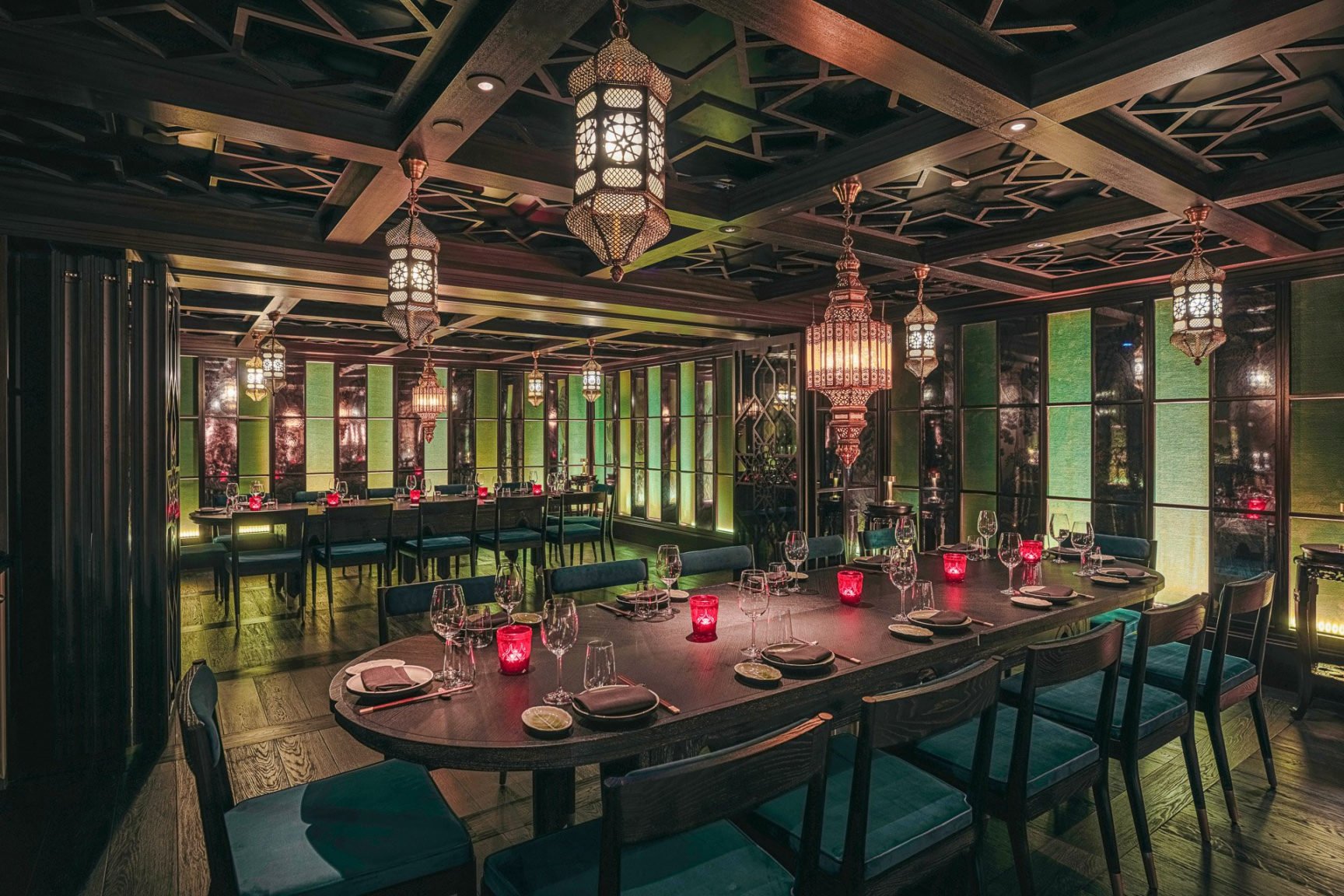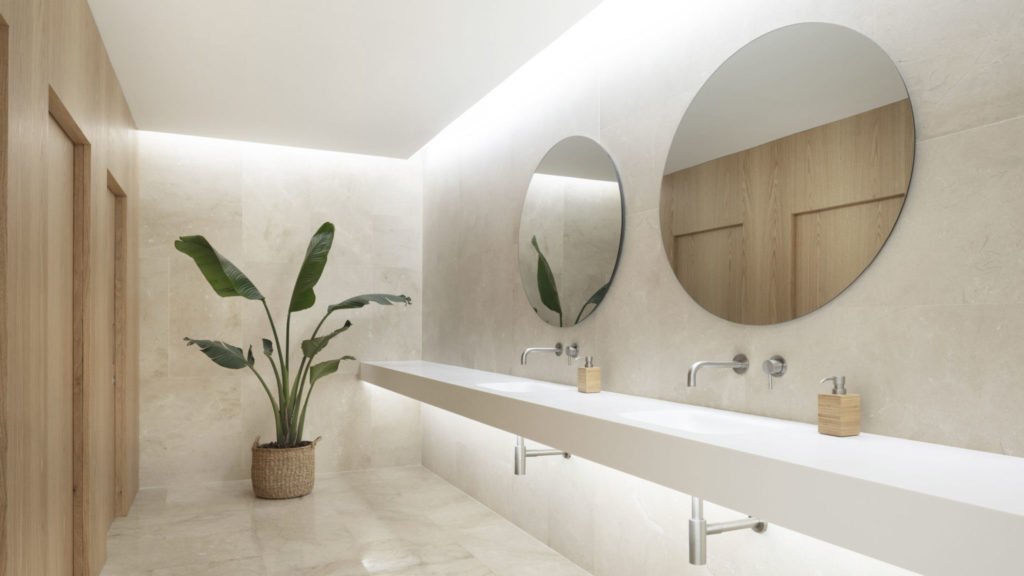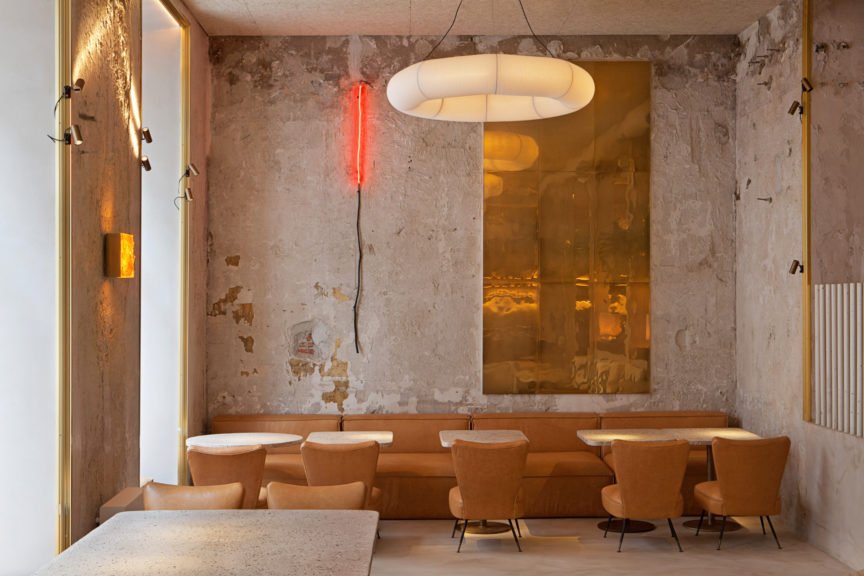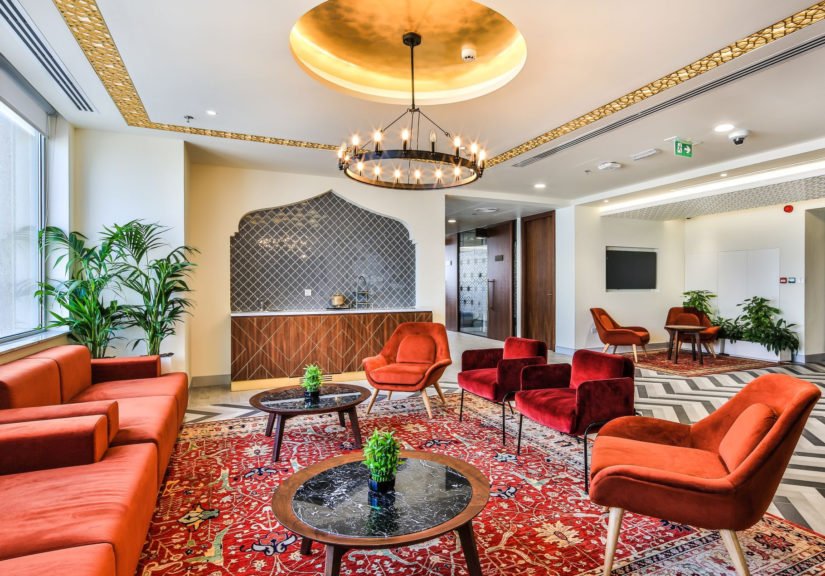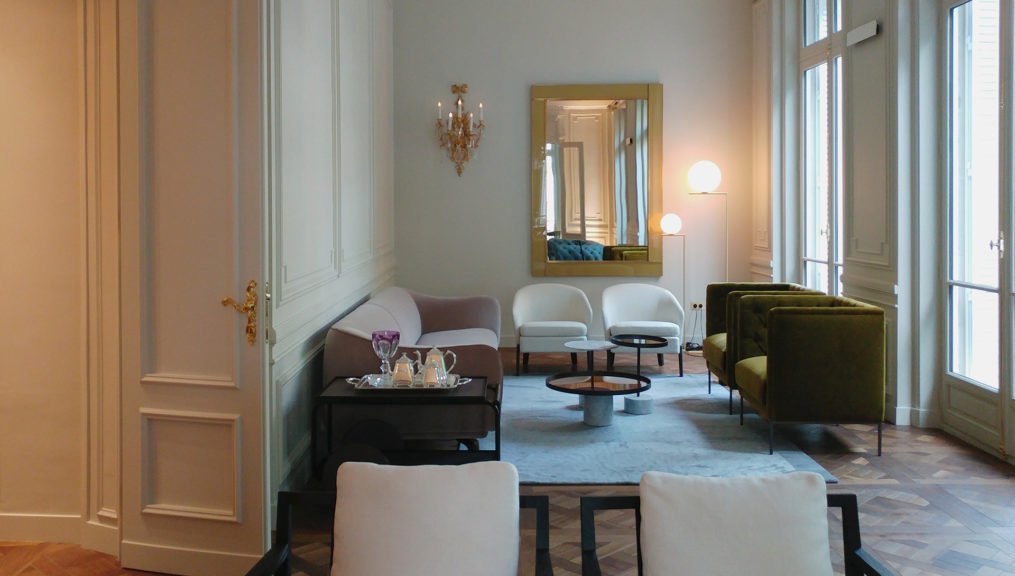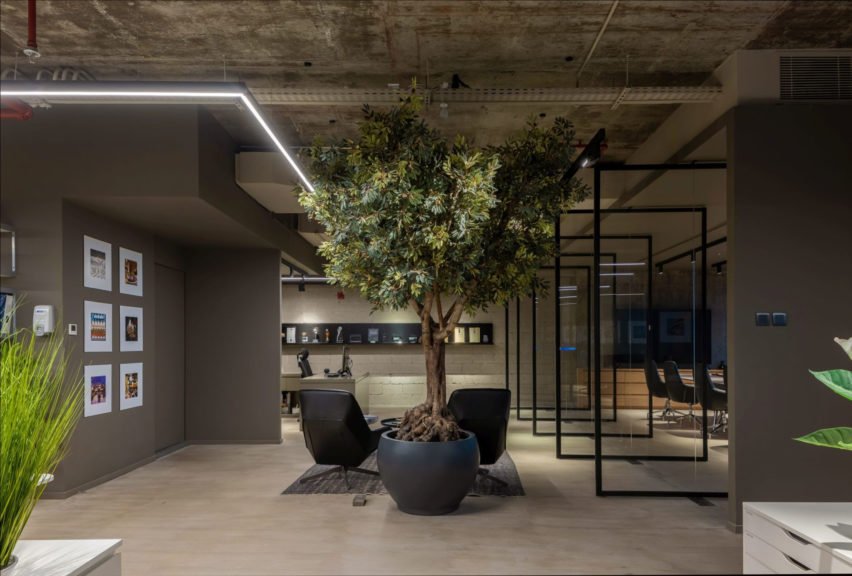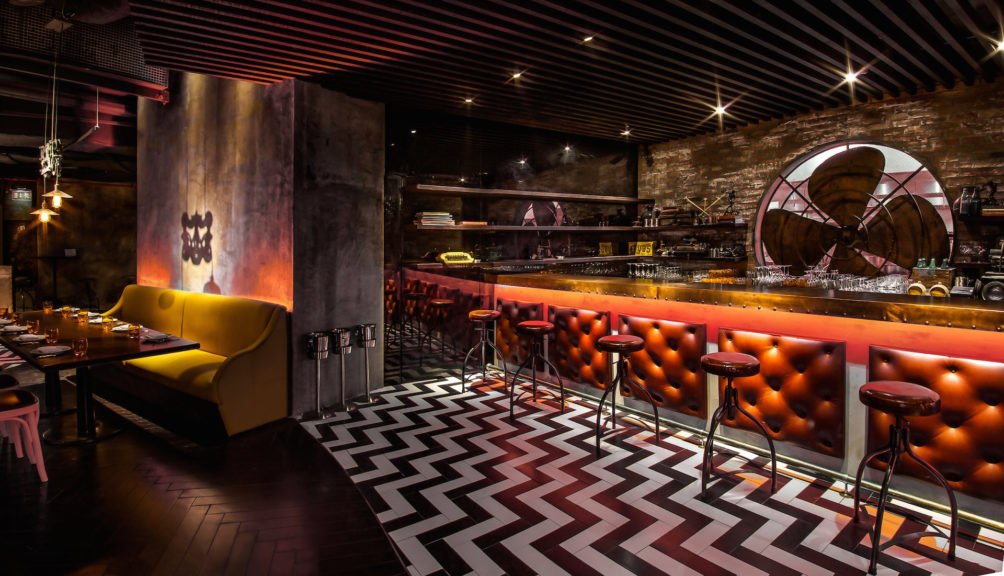Picture this – You’re standing in the middle of a grand palace, surrounded by ornate archways, vibrant mosaics, and intricate patterns that seem to dance before your eyes. The air is filled with exotic scents, and the sound of trickling water from a nearby fountain is soothing to your senses. This is the world of Arabic interior design – a style that has captivated people for centuries with its enchanting blend of culture, art, and philosophy. Arabic interior design blends cultural richness, luxury, and comfort with captivating colours, patterns, and textures. This article discovers the magic of Arabic interior design – a style that is as ancient as it is modern, as elegant as it is cosy, and as luxurious as it is inviting. Here, every detail is symbolic and every corner is worth treasuring.
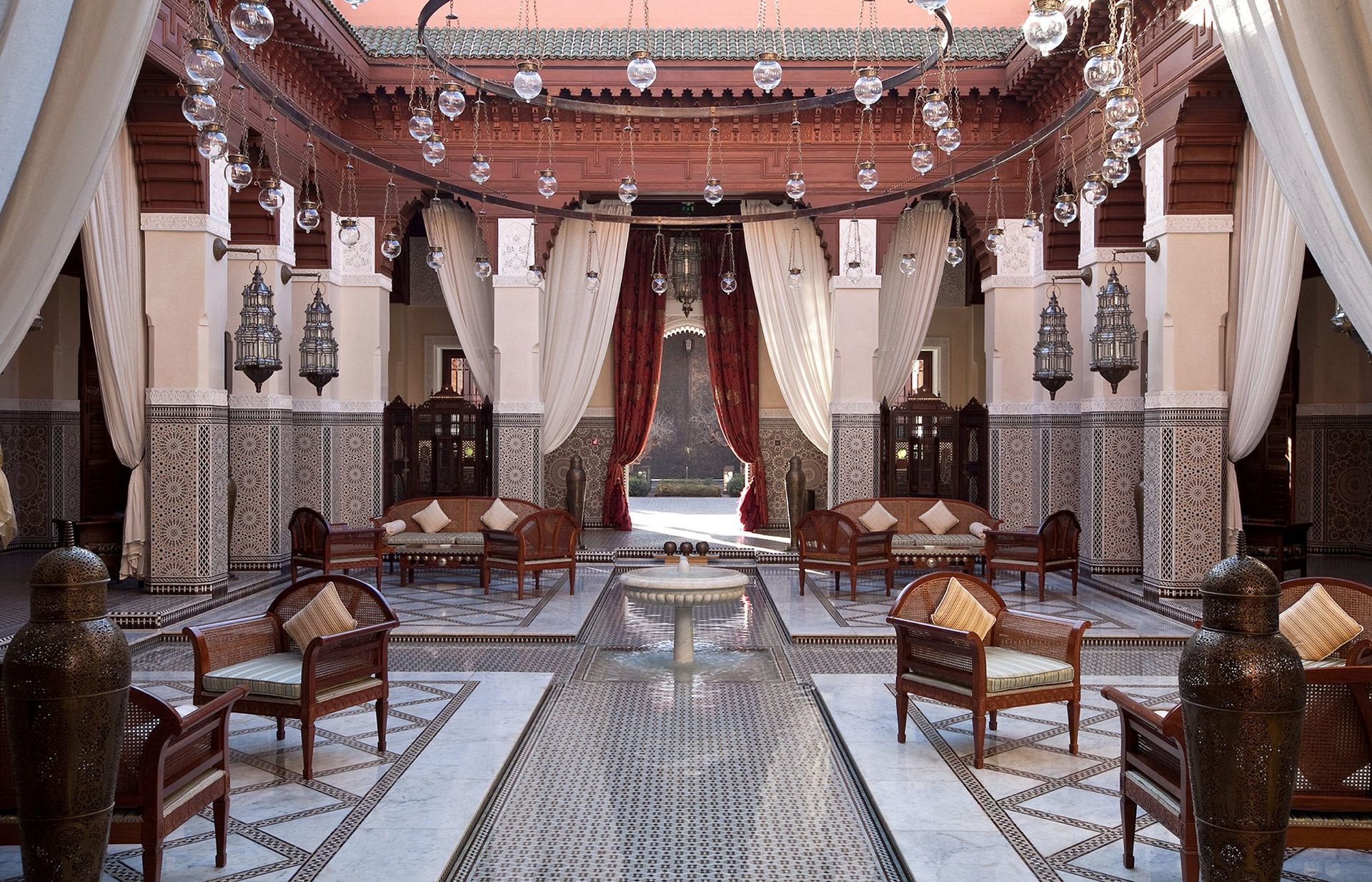
Featured Project: Le Royal Mansour Hotel, Marrakech by OBMI
History: Tracing the Origins
Arabic interior design has a history that spans through continents. Its roots can be traced back to the 7th century, when Islam was born and the first mosques were built, incorporating intricate calligraphy, arabesque motifs, and colourful tiles. Over time, Arabic interior design evolved and diversified, influenced by various cultures and traditions, from Persia and India to Morocco and Spain.
During the Golden Age of Islam (8th to 14th century), Arabic interior design reached its zenith, with the construction of palaces, madrasas, and mosques that showcased its finest elements, such as muqarnas (honeycomb vaulting), riwaq(arcaded portico), mashrabiya (lattice screens), and zellige (mosaic tiles). In the following centuries, Arabic interior design continued to evolve and adapt to changing times and tastes, from the Ottoman Empire to the Safavid dynasty, from the European Renaissance to the Industrial Revolution.
Key Features: Scripting Arabic Interiors and Architecture
1. Islamic Patterns and Calligraphy
Arabic interiors showcase an array of intricate patterns and calligraphic scripts that adorn walls, ceilings, floors, and furniture. The geometric patterns are formed using a palette of four basic shapes: circles, squares, stars, and polygons. The combination and repetition of these shapes create intricate and hypnotic designs that have captivated the human eye for centuries. Each motif, whether geometric or calligraphic, showcases the mathematical precision and artistic mastery that are the foundations of Arabic design.
2. Archways and Domes
Arabic interiors often feature archways and domes, which add a touch of grandeur and sophistication to the space. These architectural features are adorned with stunning stucco work, mosaics, and arabesque patterns that reveal the craftsmanship and creativity of Arabic artisans. Each archway and dome is a portal to a world of beauty and wonder.
3. Ornate furniture and plush textiles
Elegant furniture pieces and rich textiles add to the richness and warmth of the Arabic interior spaces. Plush carpets, silk curtains, and embroidered cushions in vibrant colours and intricate patterns create a cosy and inviting atmosphere. Rich silks, velvets, and brocades in warm hues such as gold, bronze, and copper are often used in upholstery, drapery, and bedding.

4. Lighting
Lighting is a crucial element in Arabic interior design. It’s all about creating a warm and inviting ambience through the use of soft, diffused lighting. Ornate lighting fixtures like chandeliers, lanterns, and sconces are popular choices. These fixtures are often made from metals such as brass, copper, and silver, and are intricately detailed with Arabesque patterns.
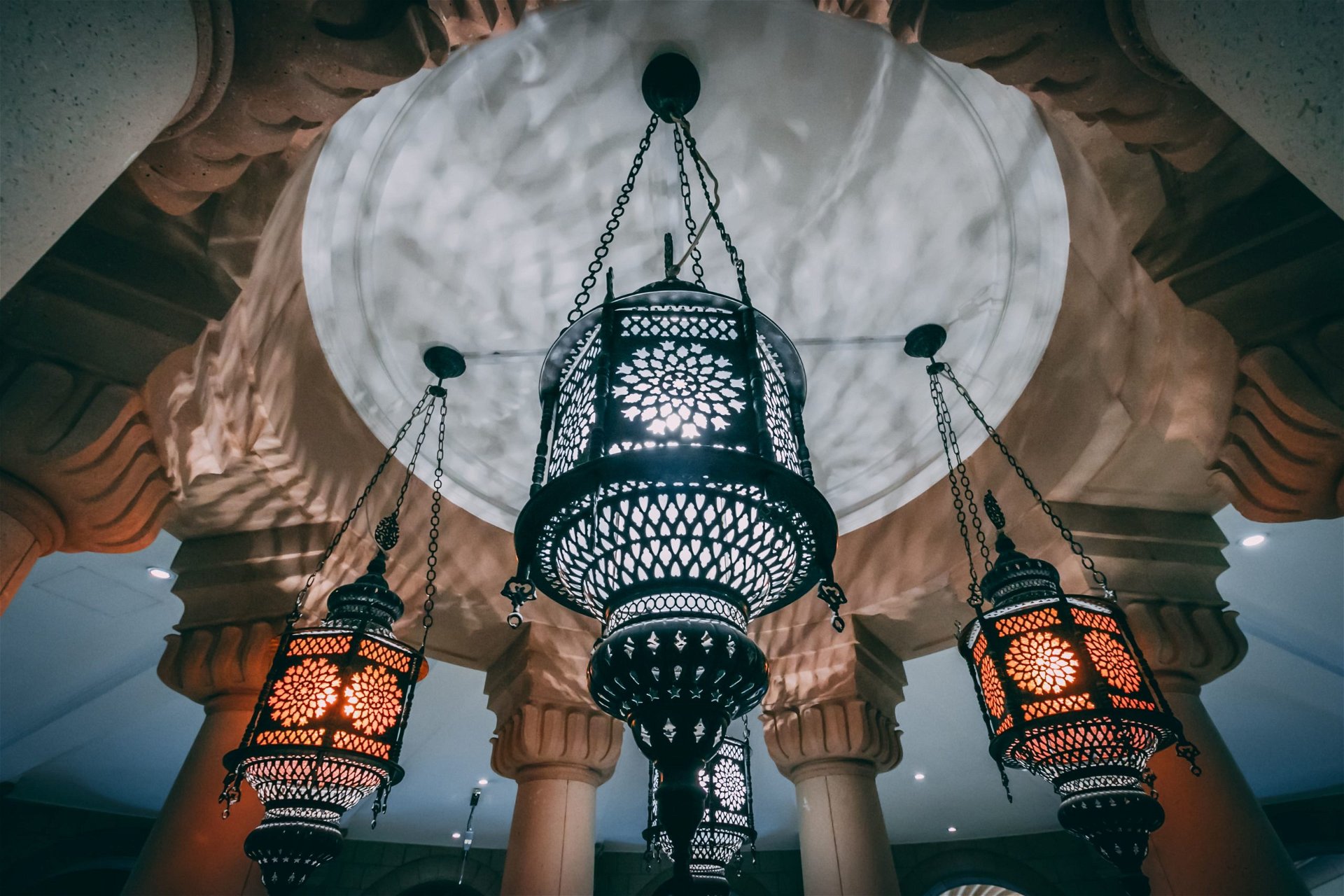
5. Intricate Woodwork
Wood is a fundamental material in Arabic interior design, a material that is transformed into a work of art through intricate carvings and ornate patterns. Every surface is a canvas, a medium for the creation of elaborate designs. These woodwork accents, be it the intricate panels on the walls, the screens that filter light, or the furniture that adorns the space with an essence that is impossible to ignore.
6. Bold Colours
Colour becomes a feast for the eyes and makes Arabic interior spaces dazzle with richness and vibrancy. A palette of jewel tones, deep blues, emerald greens, ruby reds, and shimmering gold, infuses the space with a sense of majesty and luxury. These hues, bold and unapologetic, create an ambience that is at once inviting and regal, a space that beckons with the promise of enchantment and wonder.
Cues: Adding the “Arab” Charm
1. Mix the Old and the New
The timeless beauty of Arabic interior design can be seamlessly incorporated into modern spaces by mixing old and new elements. Think about pairing a vintage brass chandelier with a sleek acrylic coffee table, or a set of antique Persian rugs with a contemporary sectional sofa. Add an old-world charm to your space without compromising the modern aesthetic, creating a harmonious and visually stunning atmosphere.
Featured Projects, from left: Al Nizami Darbar, Mumbai by Forms+Surfaces | Image Courtesy: Yamini Krishna Photography; Anar Restaurant by H2R Design | Image Courtesy: Alex Jeffries Photography Group
2. Choose a Colour Story
The warm and vibrant colours used in Arabic interior design are a defining feature of the style. Embrace a colour story that includes these hues to bring a touch of Arabic style to your modern space. Consider using colourful textiles like throw pillows or curtains, or adding a statement piece of art or furniture in a bold colour.
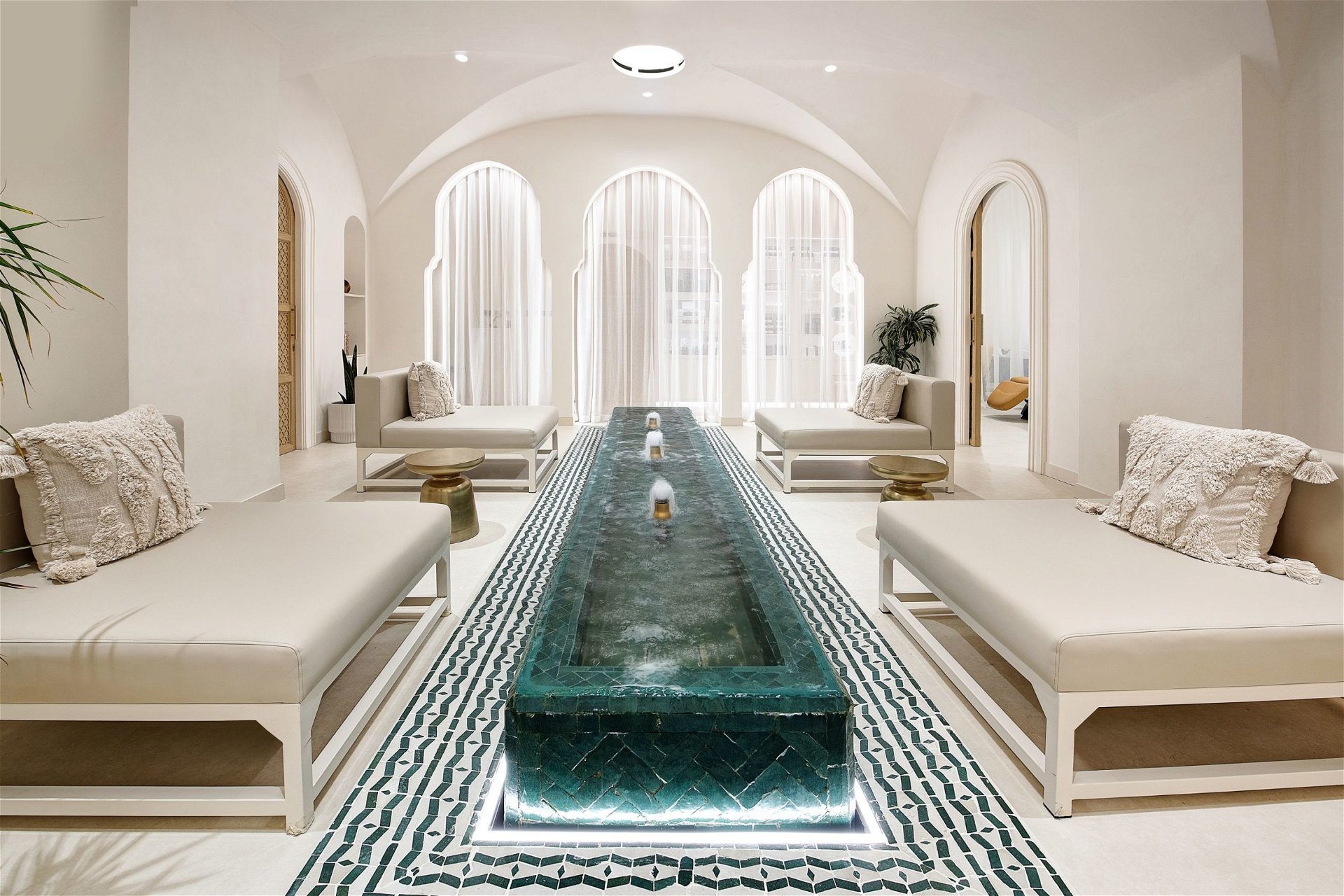
Featured Project: IZIL Spa by Brand Creative | Image Courtesy: Michael Kruger Photography
3. Focus on Details
Add decorative trim to a set of curtains, hang a framed Arabic calligraphy piece on the wall, or incorporate a set of ornate drawer pulls on a piece of furniture. Consider adding a Moroccan-style tile backsplash in the kitchen or bathroom for an unexpected touch.
Featured Projects, from left: IZIL Spa by Brand Creative; Xworks Interiors Office
4. Incorporate Arabic Patterns
Incorporate Arabic patterns on textiles like bedding, cushions, and curtains. Add an Arabic patterned wallpaper or stencil design onto the walls to create a stunning feature. Use an intricately patterned screen as a room divider or create a beautiful accent wall using patterned mosaic tiles.
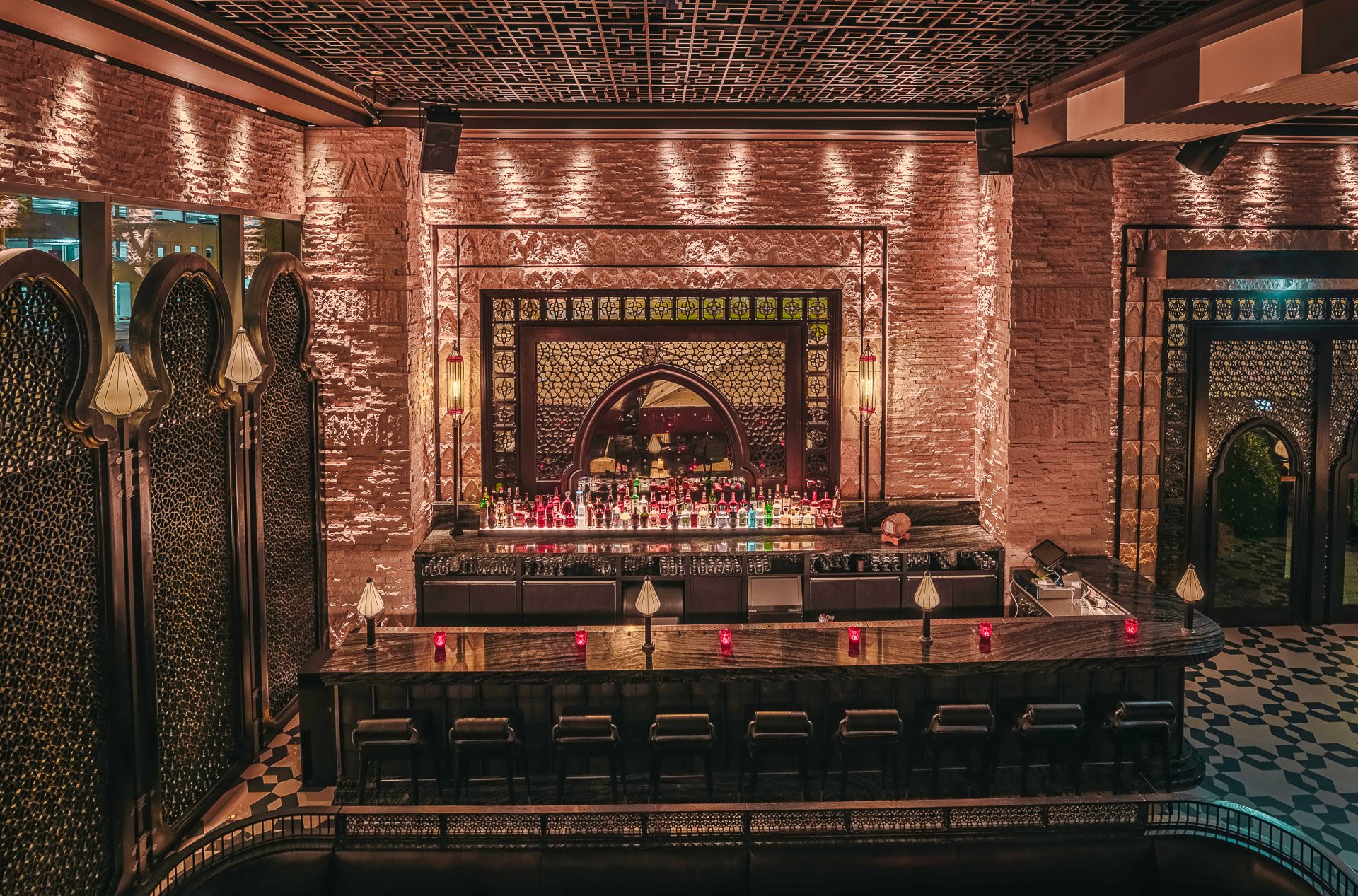
Featured Project: Hutong Restaurant, Dubai by Fabled Studio
5. Introduce Calligraphy
Arabic calligraphy is an art form that dates back centuries and adds a sense of elegance and sophistication to any space. Incorporate beautiful calligraphy on the walls as artwork or on textiles like a rug. Consider having a custom calligraphy piece created as a focal point in the space. You can also incorporate calligraphy into everyday objects like ceramics or vases for a subtle touch.
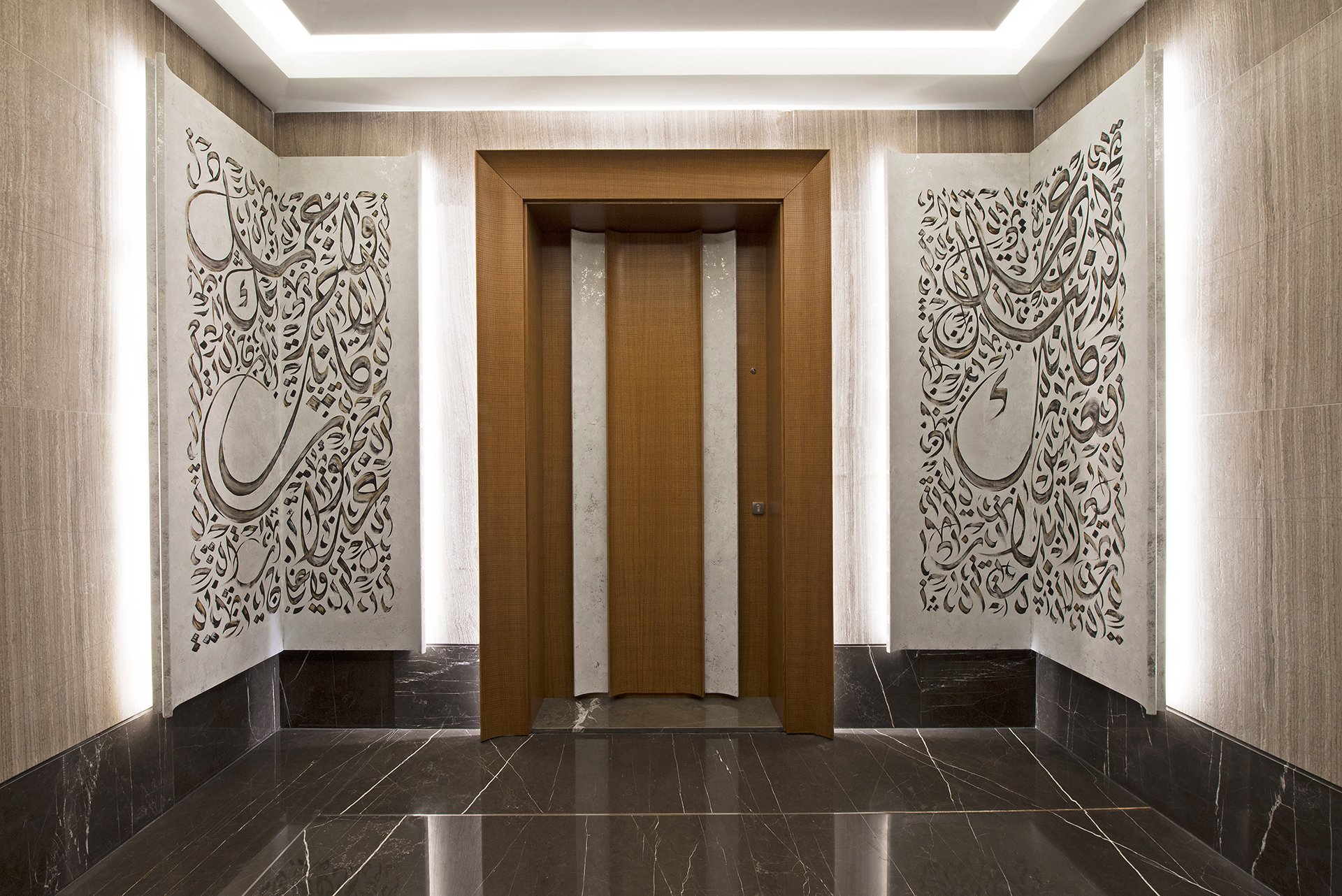
Featured Project: Cherished Glow, Beirut by Wael Farran Studio | Image Courtesy: Wael Khoury Photography
6. Create a Soothing Atmosphere
Arabic interior design is all about creating a welcoming and relaxing atmosphere. Create an inviting seating area with plush cushions and throw pillows, and incorporate scented candles or incense for a sensory experience. Add a fountain for a tranquil touch or create a cosy reading nook with a low table and floor cushions.
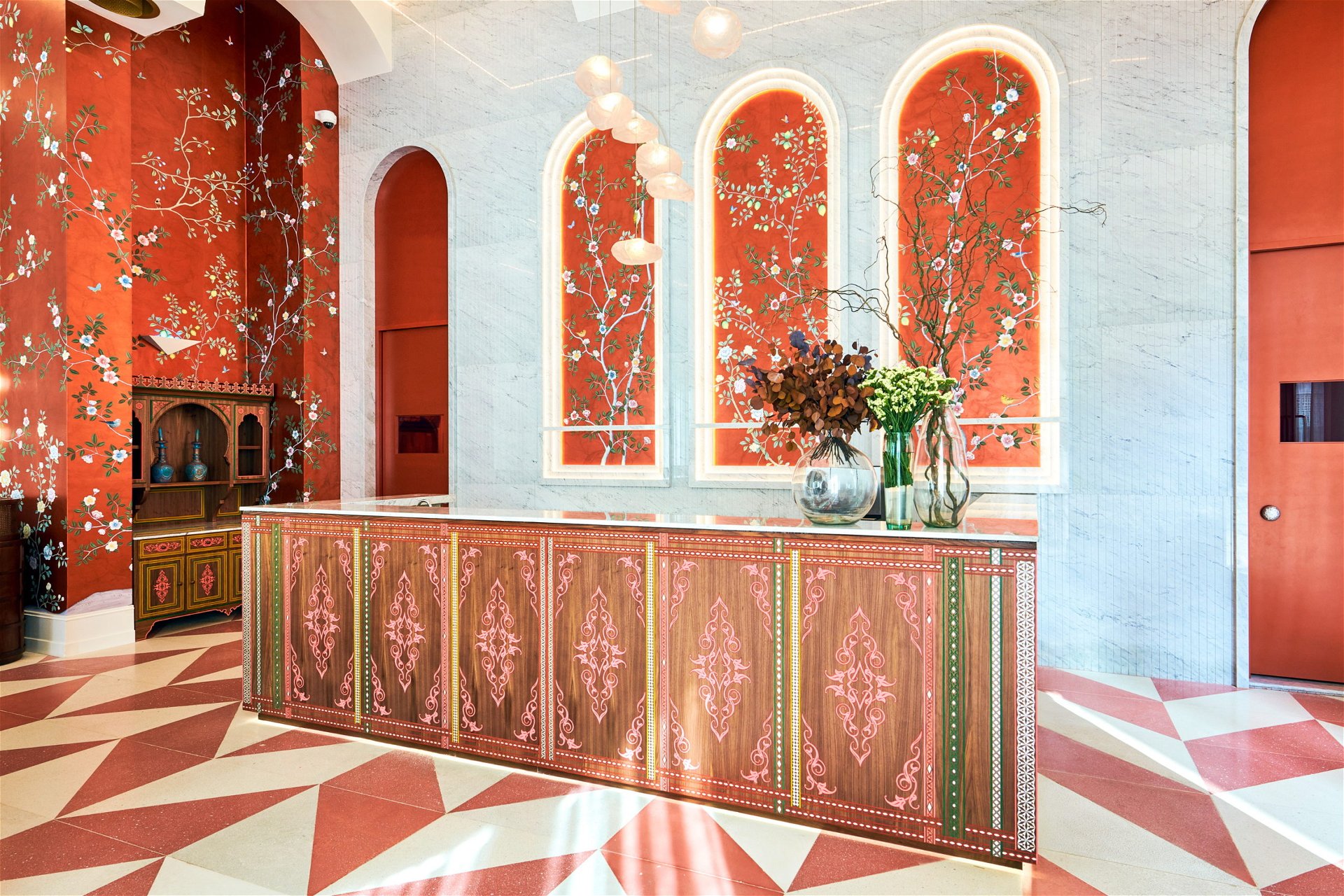
Featured Project: Nisrine Restaurant, Doha by Rabih Geha Architects | Image Courtesy: Ingrid Rasmussen
Arabic Interiors are all about Traditional Techniques + Modern Sensibilities
Arabic interior design is not confined to the past; it is a thriving, evolving tradition that continues to inspire us today. By blending traditional techniques with modern sensibilities, a new wave of contemporary Arab design has come that is both innovative and respectful of its heritage.
Article info
Article:
Date added:
20 April, 2023

